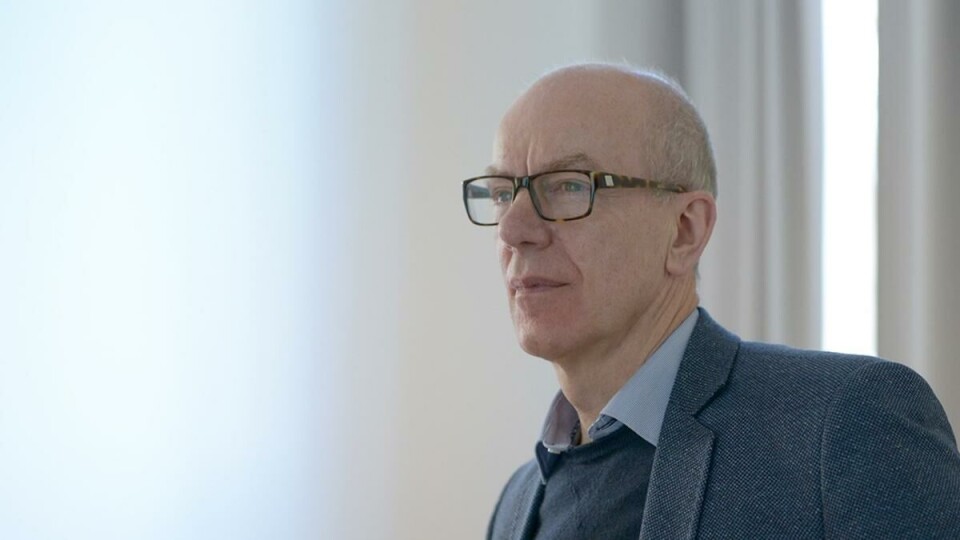Norwegian PhD Structure

An appealing opportunity that is difficult to obtain
In 2020, Norway awarded 40% of 1,634 doctoral degrees to international candidates. What does it take to become a PhD candidate in Norway?
As the number of PhDs awarded in Norway has grown since the 1990s, so too has the percentage of «foreign» PhD recipients, according to data from the Nordic Institute for the Studies of Innovation, Research, and Education (Nordisk Institutt for studier av innovasjon, forskning og utdanning, NIFU).
There are several reasons why pursuing a PhD in Norway would look good to most students from all over the world. To understand the history and current trends in Norwegian PhD programs, Inter-Universitas spoke with Professor Peter Maassen, professor of higher education in the Faculty of Educational Sciences at the University of Oslo. This first article in our series on PhDs in Norway will focus on the structure of the system.
Which institutions offer PhDs?
In Norway, three of the four types of higher education institutions hire PhD candidates: universities (total of 10 institutions, all public, including University of Oslo, University of Bergen, etc.), specialized university colleges or «høyskoler» (such as the Norwegian Business School [BI] and the Norwegian Academy of Music), and the university colleges or colleges of applied sciences (including Østfold University College and the Norwegian Police University College) (Source: NOKUT accredited institution database).
How long are PhD programs?
Candidates sign a formal contract by the Faculty that is hosting the PhD program the candidate enrolls in. While they are required to finish their PhD project in 3 years, including 6 months of coursework, most candidates sign a 4-year contract. The additional year is for doing work besides the PhD project, such as teaching or administrative tasks. This additional year is optional, even though most candidates accept the 4-year contract.
How much are PhD candidates paid?
While there is typically a requirement to complete about a semester’s worth of coursework, PhD candidates are not referred to as «students» because they are hired by the university facilitating their program for a 3-year contract, and are considered members of staff. For this reason, when looking at the «Employee» section of a Faculty, you will find the PhD candidates listed as well: for example, the «Employees» page for the Faculty of Social Sciences at Oslo Met.
PhD candidates in Norway are the highest paid PhD candidates in the world. According to Dion, the interest organization for Post-Docs and PhDs at the Norwegian University of Science and Technology (NTNU), the Norwegian government considers PhD candidates to fall into salary category 50. A recent update of the wage scale shared for UiO employees indicates that as of May, 2021, level 50 employees receive 461,300 nok annually. Dion’s page suggests that this wage may be negotiated during the hiring process, and some positions advertise higher salaries.
Being hired as a full-time employee for a PhD as an international student means that, in most cases, candidates cannot work or receive funding outside of the program. For example, if a student is sponsored by the government of their home country, they cannot receive those funds in addition to their salary at the Norwegian university.
There are, however, exceptions to this rule:
«You can’t say, ok, I have a 40 hour contract, but then I work 20 hours on top of that and I do it in the evening. That’s not convincing,» says Professor Maassen. «There are ‘honorary’ tasks... you get paid, and you can do that next to your PhD.”»
Honorary tasks - such as serving on the institutional board of a professional organization or initiative - should be related to your area of study and be approved by your employer, «It has to be related, and it has to be a professional position which would most likely [not] have a consequence for the time you would devote to your PhD work.»
What makes a good PhD candidate, and how do you apply?
The process is similar to other systems around the world where prospective candidates apply directly to an open call for specific PhD positions. A strong grade on a master’s thesis is important, in addition to knowledge of appropriate quantitative and qualitative research methods, and proficiency in English (though typically not Norwegian).
But there are differences between both institutions and disciplines when it comes to the application process:
«Oslo Met has 6 PhD programs which are relatively young - since it is a new university, with relatively few PhD students. And at OsloMet the selection of candidates is less based on a project proposal than here [University of Oslo] where it is really the project proposal that counts,» Professor Maassen tells Inter-Universitas.
In the natural sciences, the project may already be decided and funded by the Norwegian Research Council, meaning that PhD candidates apply to work on the specific project for 3 years and earn a PhD. But for social sciences, humanities, and other faculties hiring PhD students, the project proposal is crucial.
«You’ve got to have a 10 page project description that’s judged,» Professor Maassen adds, «And that’s, let’s say, the key component together with the CV in the selection of candidates.» Once candidates are narrowed down, the final 3 or so interview for the position.
Competition is High
With around 1600 PhDs awarded each year, competition is high for these coveted positions. Professor Maassen mentions that a number as high as 40% of PhDs being awarded to international candidates is «quite high.»
«There is quite a lot of discussion in Norway about the pros and cons of a high number of international PhD candidates. But at the same time, the government in its internationalization policy is really stimulating the participation, or the enrollment in doctoral programs, also with the international [candidates].»
Thomas Barnes, a PhD candidate from the United Kingdom in UiO’s faculty of Mathematics and Natural Sciences, is focusing on geomorphology («the study of landforms, their processes, form and sediments at the surface of the Earth» - British Society for Geomorphology), and received his bachelor degree in geography and a masters in environmental sciences. He informed Inter-Universitas that he applied to about 80 PhD programs throughout the Scandinavian countries and Germany. Out of these applications, he received 6 interviews and 1 offer.
Ari Mamshae’s experience applying for a Research Fellow position in the Department of Political Science was «quite smooth and without any difficulties,» but it did take some time, he says: «the process of recruitment took longer than initially announced and anticipated as there were way too many people who had applied to this position.»
With intense competition, international students may wish to consider Professor Maassen’s advice when applying for PhD positions:
«Familiarize yourself with the academic profile of the Faculty or Department that is announcing the position to which you apply, and make sure that your PhD project proposal fits this academic profile.» Around the world, this is often an applicant’s best chance of securing a PhD position.
But there is more to focus on, as trends demonstrate an increasing pressure on universities to connect their actions to the greater community (Maassen, Andreadakis, Gulbrandson & Stensaker, 2019) which, in the case of Norway, funds nearly all operations (to public institutions, and less so to private) through public expenditure.
«In addition,» Professor Maassen advises, «especially for social science and humanities PhD applicants: submit a project proposal that is of relevance for the Norwegian society, e.g. by producing or using Norwegian data.»
































